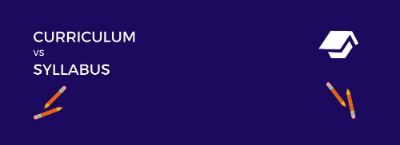We are in the era of excessive volumes of information. Even if the main online platforms strive to have effective policies for content control, the internet is still uncontrollable at some point in terms of the information it rotates.
Finding quality content is key: to doing good research, being properly informed, and making successful decisions. Google is the leading, but not the only platform you should rush to search for something, especially on academic topics.
This article will introduce you to a JSTOR, an online library with both paid and free access to a huge pull of academic content.
If you are not aware of the platform, you will love it, especially if your studies or work are related to doing research.
In exchange for your time, this article is going to present to you:
What is JSTOR
Type of materials JSTOR offers
How to get access, both paid and free
Chronology of Development up to Current
JSTOR seems not to change its main purpose and role since the very establishment. In 1995, when Princeton University president Wiliam G. Bowen founded JSTOR, it was a digitalized solution for journal storage.
Many libraries had spent much space, money, and workforce to physically preserve the published journals for not to lose their content. As the journals were becoming more, libraries and publishers faced real difficulty collecting them all in one place.
JSTOR came as an alternative solution for storing all the information. At first, the company used CD-ROM to save the digital version of journals. Afterward, it grew from being accessible in seven library sites to a full-scale searchable index, accessible from any browser.
Currently, the perseverance of academic journals and content also lies as a base of JSTOR's operation. The platform has maintained research works and their transition to future generations as one of the primary goals. The following steps are undertaken for this purpose:
JSTOR cooperates with field professionals to keep the original printings properly if there is a need to re-digitize them later.
The digital versions of original publications are made to be easily converted into the new data formattings of the future.
Redundant data centers are having a full-copy of JSTOR digital library materials.
There is a scheme to transfer the whole funds of JSTOR to the third party steward in case the platform will stop the operation (which we hope will not happen).
Up to 2009, JSTOR was an independent nonprofit organization. In 2009, it became one of ITHAKA’s member organizations, another nonprofit organization aiming to support the academic audience and knowledge sharing.
What Is a Modern JSTOR and What You Can Find There
Current JSTOR provides the researchers with 12 million academic journal articles, 85,000 books, and 2 million primary source documents in 75 disciplines. JSTOR is highly selective in the quality of the content it preserves and provides to its audience, so be sure to find deep and trustworthy analysis, research, and articles here.
In more detail, JSTOR includes:
Journals
Books
Primary Sources
Thematic Collections
Open Community Collections
1. The archival journals of JSTOR include the full version articles of more than 2600 academic journals. Two more of the impressive numerical statistics are that the journals are from 1200 publishers from 57 countries. You may pick the articles related to your research topic from multi-discipline, discipline-specific, and region-based packages. Also, there is a collection of newly issued journals with fresh publications from 50 leading publishers. Archival or not, JSTOR guarantees that the topics available on their platform today will not be withdrawn from it later. You may consider this information as additional security for your research and citations.
2. The component library at the JSTOR's digital library definition stands for more than 100,000 ebooks of 250+ scholarly publishers available on the platform. There is an offer for unlimited, DRM-free access to book chapters for smoother and simpler research. View the available list of books in the title collections grouped for you in advance: History, Language and Literature, Philosophy, Political Science, Religion, and Sociology.
3. There are more than two mln primary sources, which JSTOR divided into four main collections. Global Plants is a research resource for the spheres of botany, ecology, and conservation studies. There is an option to study socio-political and economic factors impacting 19th-century Britain in the 19th Century British Pamphlets collection.Struggles for Freedom: Southern Africa contains more than 190,000-page documents, including the evidence of the events in nationalist publications, records of colonial government commissions, local newspaper reports, personal papers, etc. Finally, World Heritage Sites: Africa is an attractive journey through more than 57000 photographs, 3D models, excavation reports, and other materials of African Heritage sites.
4. Thematic Collections is where you can find the research on the emerging areas and issues. Explore journals and open research reports on the hottest research areas such as Lives of Literature, Security Studies, and what the modern world mostly works for, Sustainability.
5. Open Community Collections is meant to reveal the potential of separate institutions by providing their materials on the platform faculty, and students widely use. Within this option, the content developed by the institution reaches millions of new audiences.
How You Can Access JSTOR's Academic Materials
It's not surprising that you need to sign up and log-in first to unlock the platform's opportunities. Note that the registration depends on what kind of researcher you are and what your occupation is at the moment.
For most educational institutions, JSTOR access is automatically granted to students after admission. Usually, opening the JSTOR's website from the institution's location, computers or wi-fi should automatically log you in without asking for any credentials. The university/college/high school administration should give you technical information related to this. Otherwise, this article is going to navigate you through the steps you should take.
If you are an independent researcher, you need to register an individual account to start your journey through the platform. The registration process takes some minutes and does not have any complicated flow of actions. In 1-2 minutes, you hold an account in JSTOR, enjoying all the benefits it provides.
Technical moments aside, you may conclude that JSTOR charges a high price for its membership, considering the fullness of the research base it provides. This is not much of a truth. JSTOR is a nonprofit organization with the mission to spread academic knowledge worldwide, so the prices are set accordingly, along with the series of benefits for free access.
Free Access
The sweetest, the first. Let's discuss what materials are free-accessed for you after the account registration in the platform.
You are going to meet one of the rare positive consequences of the COVID pandemic here. Within the initiative to support academic society during the lockdown, JSTOR expanded the free access for both member educational institutions and everyone using the platform.
So, until June 30, 2021, all the participating institutions have free access to Unlicensed collections and Artsor's (another member of ITHAKA) core collection.
Until 30, 2021, every user of the platform, regardless of the inclusion in the education institution, has free access to 6000+ journal articles related to COVID-19, + the extended quantity of 100 monthly free articles previous six.
With your registered individual account, you can use Workspace to organize your research, citations, and explore materials in one place, save your work or view the usage statistics for librarians.
Paid Access: JPASS
Thanks, JSTOR, for the free access materials, but your research load and deadlines may require more than that. In that case, there is a paid subscription JPASS granting you with significantly wider opportunities in the platform.
With JPASS, there is an availability of 2000+ academic journals and access to Struggles for Freedom: Southern Africa collection. However, it does not include JSTOR's books or current journal hosting programs.
JPASS is available for monthly ($ 19.50) and yearly ($ 199) tariffs. The monthly membership gives you 1-month unlimited learning and an opportunity of 10 downloads in pdf format. Yearly subscription gives you one year of unlimited reading + 120 downloads in pdf.
In a shorter path, you may upgrade your membership plan. For the JPASS, you again need a registered individual account. If you already have one, there is a possibility to upgrade it.
As you may see, JPASS does not give you full access to all the JSTOR's materials. Check the fee policy for other materials, along with the payment policies. The company claims no change in fees since 1977, despite the uninterrupted process of adding new content and experience improvement.
Published on Jan 06, 2021








